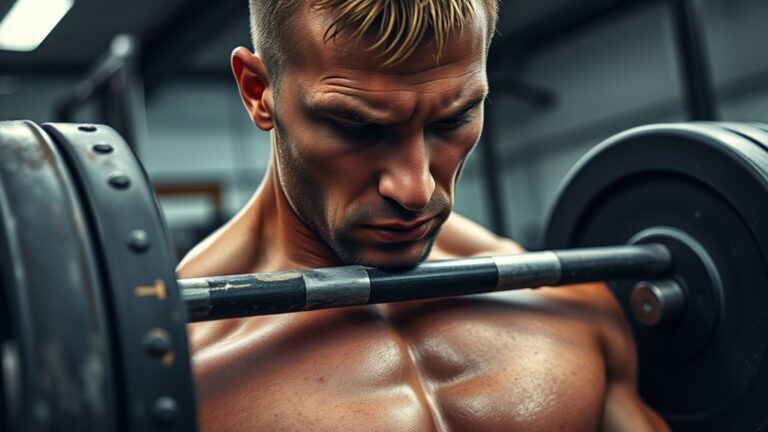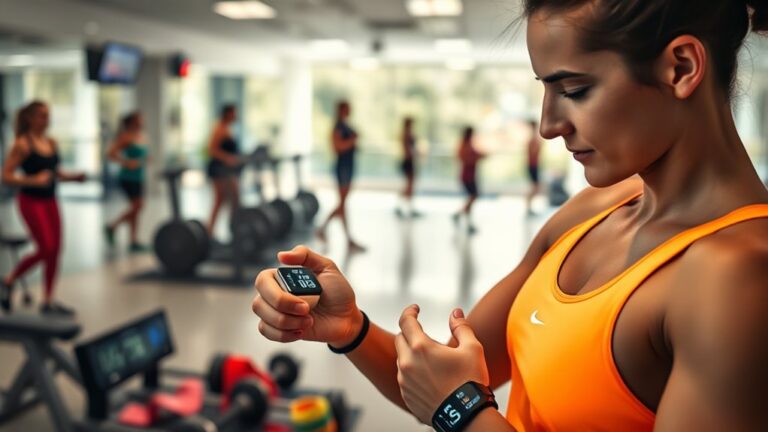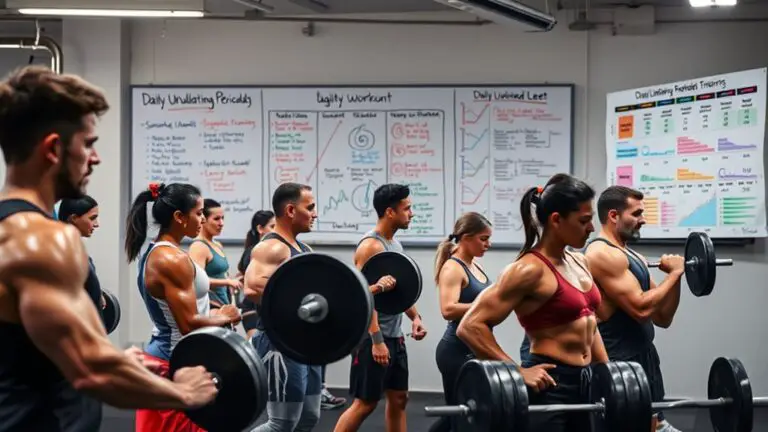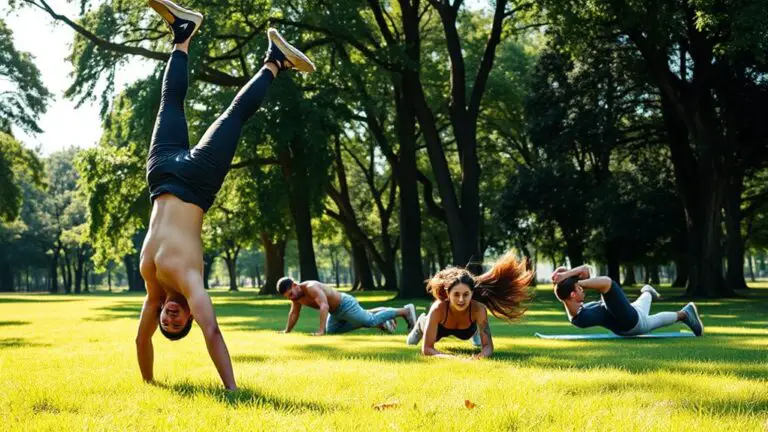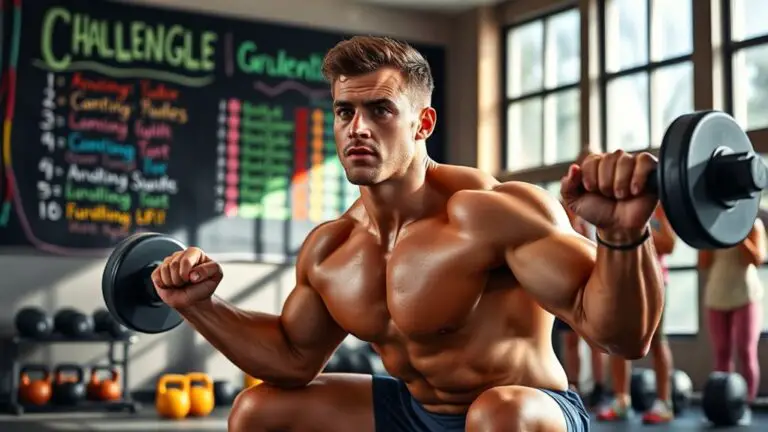How Cristiano Ronaldo Trains in the Gym for Peak Performance

Cristiano Ronaldo’s gym training focuses on diverse elements for peak performance. You’d find him engaged in strength training with exercises like squats and deadlifts to build explosive power. He prioritizes cardiovascular fitness through interval sprints and agility drills to enhance endurance. Flexibility is essential too, with dynamic stretches and foam rolling incorporated into his routine. Nutrition and mental conditioning play important roles, ensuring his body and mind are always primed. There’s so much more behind his regimen that’s worth exploring.
The Importance of Strength Training in Ronaldo’s Regimen
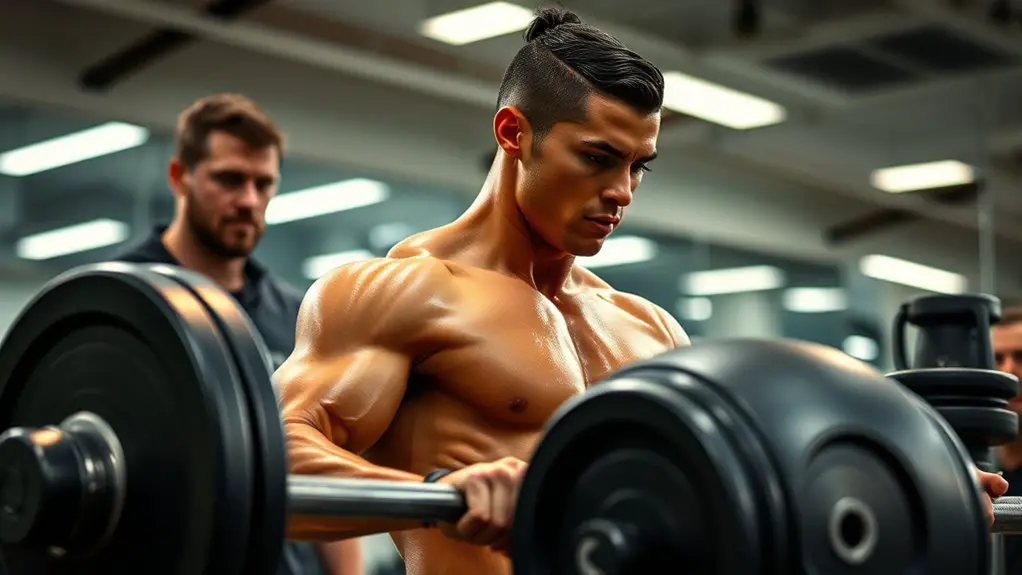
When it comes to peak athletic performance, you can’t underestimate the role of strength training in Cristiano Ronaldo’s regimen. His focus on strength exercises not only builds muscle but also enhances overall power development. By integrating exercises like squats, deadlifts, and bench presses, he guarantees his body can generate the explosive strength needed for those game-winning moments.
Ronaldo’s training emphasizes functional strength, which translates directly onto the field. By prioritizing compound movements, he engages multiple muscle groups, improving both coordination and balance. This approach helps prevent injuries, allowing him to maintain his competitive edge over time.
Moreover, the strength he gains from these exercises supports his agility and speed, essential for a top-tier athlete. By making strength training a cornerstone of his routine, Ronaldo not only maximizes his performance but also sets a standard for aspiring athletes everywhere.
Cardiovascular Fitness: Endurance and Agility
While many athletes focus primarily on strength, Cristiano Ronaldo knows that cardiovascular fitness is crucial for enhancing endurance and agility on the pitch. His training regimen emphasizes improving aerobic capacity through targeted exercises, allowing him to maintain peak performance during matches. By incorporating interval training, he effectively boosts his stamina, alternating between high-intensity bursts and active recovery periods.
This approach not only builds endurance but also sharpens his agility, enabling quick changes in direction and pace. You’ll often find him performing exercises like sprints, cycling, and agility drills, all designed to optimize his cardiovascular health. Skipping rope, which can be both aerobic and anaerobic, is another effective tool he might use for conditioning.
Ronaldo’s commitment to cardiovascular fitness guarantees he can outlast opponents and showcase his remarkable skill set throughout the game. By prioritizing this aspect of training, you can take inspiration from his methods and enhance your own performance, whether on the field or in daily activities.
Flexibility and Recovery Techniques
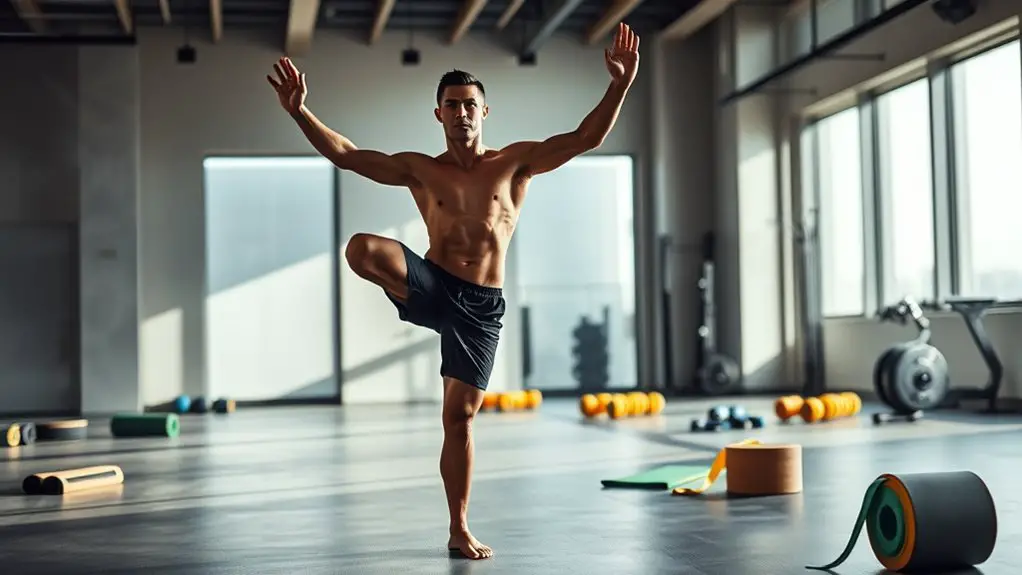
Building on his commitment to cardiovascular fitness, Ronaldo recognizes that flexibility and recovery techniques are essential for maintaining peak performance. To enhance his flexibility, he incorporates dynamic stretching into his warm-up routine, which prepares his muscles for explosive movements on the pitch. This type of stretching increases blood flow and range of motion, reducing the risk of injury during intense training sessions.
Recovery is equally vital for Ronaldo. He often utilizes foam rolling to alleviate muscle tightness and improve overall mobility. This technique helps to release tension in the fascia, allowing for better blood circulation and quicker recovery times. By actively engaging in these practices, you can follow Ronaldo’s lead in prioritizing flexibility and recovery. These techniques not only enhance performance but also guarantee longevity in your athletic pursuits, enabling you to maintain the high standards set by elite athletes like him.
Nutrition: Fueling the Body for Optimal Performance
To achieve ideal performance on the field, it’s essential to understand that nutrition plays a pivotal role in an athlete’s success. For you, mastering meal timing can greatly enhance your energy levels and recovery. Consuming a balanced meal rich in carbohydrates, proteins, and healthy fats about 2-3 hours before training can maximize your performance. Post-workout, a protein-rich meal within 30 minutes helps replenish muscle glycogen and repair tissues.
Equally important are effective hydration strategies. Staying hydrated before, during, and after your workouts guarantees your body functions efficiently. Dehydration can lead to decreased performance, so aim to drink water regularly throughout the day and consider electrolyte-rich drinks during intense sessions.
Mental Conditioning and Focus in Training
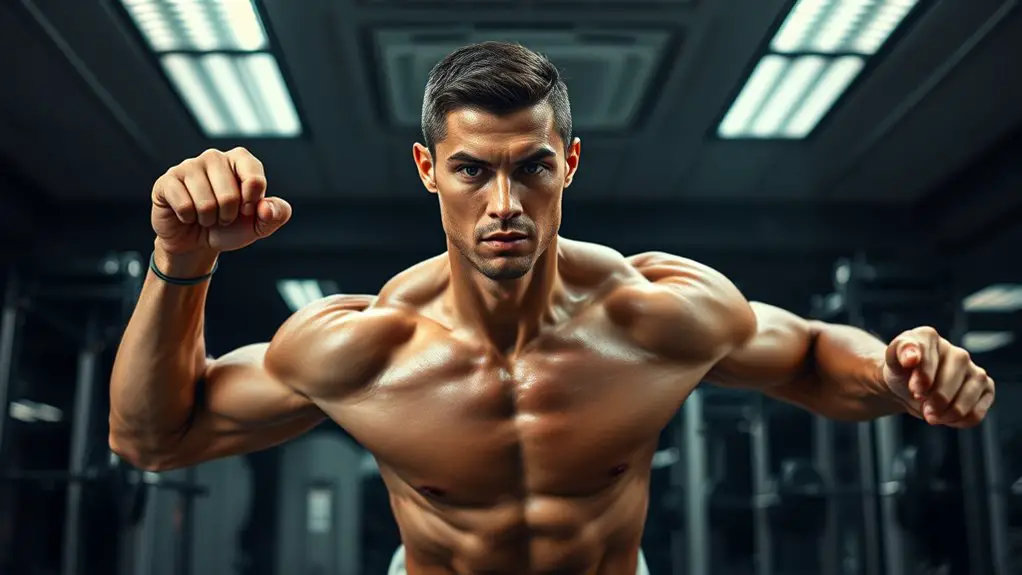
As you explore the world of training, it is crucial to recognize that mental conditioning is just as important as physical preparation. Cristiano Ronaldo exemplifies this through his rigorous focus on building mental resilience. He knows that a strong mindset can be the difference between success and failure, especially in high-pressure situations.
One of the key strategies he employs is visualization techniques. By mentally rehearsing his performance before stepping onto the pitch, he creates a powerful connection between his mind and body. This practice helps him anticipate challenges and overcome obstacles, allowing for peak performance during games.
Incorporating mental exercises into your training can enhance your focus and determination. Whether it’s through meditation, affirmations, or visualizing your goals, these techniques can sharpen your mental edge and improve your overall performance. Remember, a strong body needs an equally strong mind to reach its full potential.
Frequently Asked Questions
What Specific Exercises Does Ronaldo Prioritize in His Gym Routine?
When you think of Ronaldo’s gym routine, it’s like watching a master sculptor at work. He prioritizes strength training to build muscle and enhance power, focusing on compound exercises like squats and deadlifts. Additionally, core workouts are essential, helping to improve stability and agility. By incorporating exercises such as planks and medicine ball throws, he develops a solid foundation, ensuring he remains at the top of his game both on and off the field.
How Many Hours Does Ronaldo Train in the Gym Weekly?
When considering how many hours Ronaldo trains in the gym weekly, you’ll find he typically dedicates around five to six days. His training frequency allows for a balanced weekly schedule of strength, agility, and endurance workouts. This commitment not only enhances his physical performance but also helps prevent injuries. If you’re aiming for peak performance, incorporating a similar training frequency might just be the key to achieving your fitness goals.
Does Ronaldo Use Any Special Equipment During Workouts?
When it comes to workout routines, you’re likely curious if athletes like Ronaldo use any special equipment. He incorporates exercise variety by using a mix of traditional gym gear and advanced equipment. His preferences include resistance bands, stability balls, and specialized machines that enhance strength and agility. By using this diverse range of tools, he keeps his workouts fresh and effective, ensuring his body remains in peak condition for performance on the field.
What Role Does Rest Play in Ronaldo’s Training Schedule?
You might think training hard is all there is to peak performance, but what about rest? It’s essential! Recovery benefits can’t be overlooked, as they allow your muscles to heal and strengthen. Without proper sleep, you’re not just risking fatigue; you’re hindering your progress. By prioritizing sleep, you’re giving your body the chance to recharge, which ultimately enhances your overall training. So, don’t underestimate the power of rest in your regimen!
How Has Ronaldo’s Training Evolved Over His Career?
You might notice that Ronaldo’s training philosophy has evolved considerably throughout his career. Initially focused on sheer strength and speed, he’s now prioritized injury prevention and longevity. By incorporating flexibility and recovery techniques, he’s adapted to the physical demands of professional football. This evolution reflects a deeper understanding of his body, allowing him to maintain peak performance even as he ages. Embracing these changes, you can maximize your own training effectiveness and protect against injuries.
